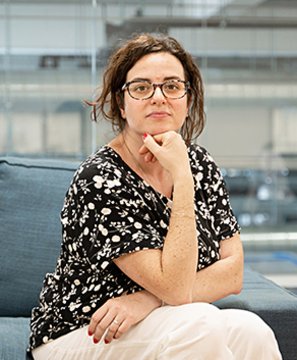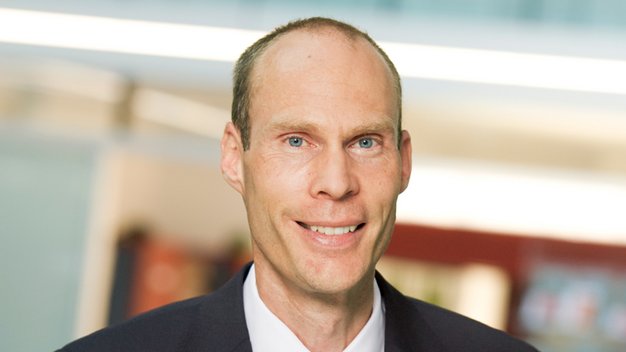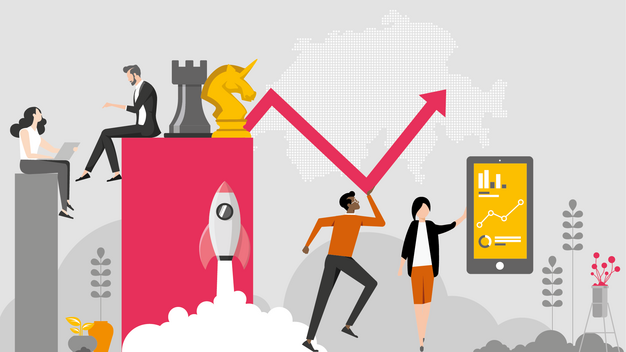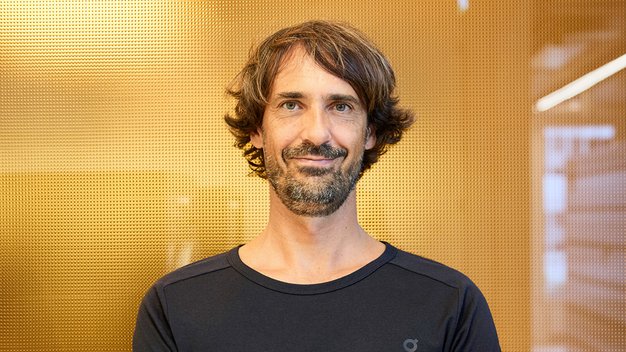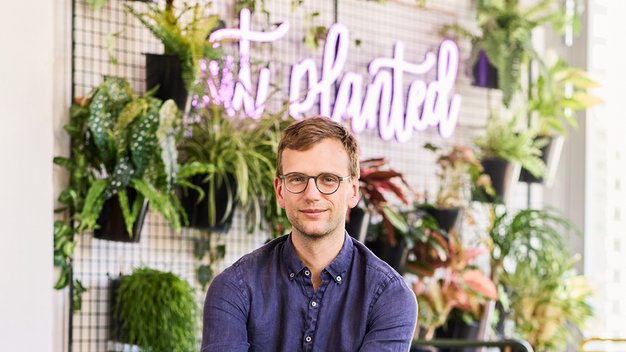Journalist: Tabea von Ow | Photographer: www.foto-shooting.ch | Magazine: Trust engenders courage – October 2022
Once Daniela Marino has her mind set on something, she sees it through to the end. The same is true for the founding of CUTISS. This CEO talks about her ambition in competitions, calculable risks and outcomes for children who have suffered burns.
Ms Marino, your company develops skin grafts made from patients’ own cells. What was it like for you when the first graft proved successful?
That was in 2014. I remember it as if it were yesterday – the patient, a small boy, had suffered severe burns. The entire team gathered in front of the glass pane of an operating theatre in the University Hospital Zurich and followed the transplantation with trepidation. We were all shaking. But it worked, and it became clear to me that we had to make this technology accessible to other people, too.
How many years had already been invested in developing the product at that point?
About 14. And I had only been on the team for around five of those years. When I first joined it as a biotechnologist, I began by investigating how to isolate blood vessel cells and culture them. Unfortunately, though, the team ran out of money shortly after I joined so I helped submit a funding application to the European Commission.
CUTISS is a spin-off company of the University of Zurich. Founded in 2017, it produces personalised skin grafts made from patients’ own cells. These are used to treat skin damage caused by burns, etc. The company’s product, DenovoSkin, is currently undergoing phase IIb clinical trials in Europe and the EU. The company was presented with the TOP 100 Swiss Startup Award in 2020. Investors include Zürcher Kantonalbank, the pharmaceutical company Giuliani, and Wyss, the joint accelerator of the University of Zurich and ETH Zurich. The University of Zurich owns the patent for DenovoSkin and CUTISS holds exclusive trademark rights.
www.cutiss.swiss
How did you do that?
First of all, our lab had to become compliant with Good Manufacturing Practices. They’re mandatory if you’re producing pharmaceutical products that you want to test on humans. So I took on some entirely new tasks: I was heavily involved in the creation of an approval team, I organised meetings and trials, wrote dossiers, registered patents and so on. I started really enjoying my role outside the lab and noticed that I seem to have a flair for business management.
Then you founded CUTISS?
No, not yet: the European Commission subsidy included a business planning seminar in France. I was excited about getting an all-expenses-paid trip to the coast and didn’t even take my laptop along. But there was a competition at the end of the week. And I’d rather be hit by lightning than pass up a chance to enter a competition! I borrowed a laptop from the hotel and held my first presentation to investors at the end of the week.
“Once I’ve set my mind to something, I see it through to the end.”
And how did the investors respond?
They were all ready to invest on the spot. But we didn’t even have a company yet. The idea took shape over the weekend and then I approached my boss on the Monday and said: “I want to use our idea to start a company.”
Which hurdles did you have to overcome?
It wasn’t easy. After all, I didn’t have a clue how to go about it. My boss and my family all thought I was crazy. Plus, I gave birth to my first child shortly before the company was founded, so the family side of things was also a bit complicated. But I’m from southern Italy and a bit stubborn by nature. Once I’ve set my mind to something, I see it through to the end.
Dr Daniela Marino (40) is the co-founder and CEO of CUTISS. She grew up in the Sicilian city of Agrigento and graduated with a master’s degree in biotechnology from the University of Milan. She then went on to earn her doctorate (PhD) from ETH Zurich. Her scientific speciality is stem cells in vascular biology. For her postdoctoral studies, she joined a research programme at the University of Zurich and University Children’s Hospital in 2009, which then spun off to become CUTISS. Marino researched the vascularisation of grafts, which means adding additional features to artificial skin such as blood and lymphatic vessels.
She is the mother of two small children.
Lots of people probably would have been afraid to take the leap, especially if their own families didn’t think it was a good idea. What made you so sure that it was the right way to go?
I knew it was a well-calculated risk. What might happen? Worst-case scenario: I’d end up going back into research. If you never try anything crazy, you’ll never make any headway. Of course, you always have to take into account the possibility that anything could go wrong at any time. If I were to go to a casino, for example, I would only ever take a certain amount of money with me. And once it’s gone, I’d go home. That’s a calculated risk.
“Of course, you always have to take into account the possibility that anything could go wrong at any time.”
Was the risk also calculable in the first operation using your product DenovoSkin?
We’d already tested the skin on different platforms, of course. But that was the first time we had taken a biopsy from a patient, brought it into our lab, extracted the cells, produced the skin graft and then reattached it to the body – on a child, no less. It was a scary moment for everyone. The parents showed enormous courage. But they were ready to do all they could for their child and promote this research. And, as expected, it worked.
“Female Leaders in Health & Pharma” network aims to strengthen the position of women in the healthcare sector.
Register now
How deeply do cases like these of children with severe burns affect you?
All patients have an emotional impact on me. We’ve now treated around 40 of them. It goes without saying that we follow their clinical history because they’re part of our research. I was most moved by the story of a boy who was treated with our grafts last year – he was only 20 days old. He’s now doing better.
Daniela Marino – In the spotlight
The first thing I think of when I hear the word “courage” is …
a rocky cliff where I have to jump into the water.
For me, the colour of courage is …
black.
When it comes to courage, my role models are …
my father and Rita Levi-Montalcini.
This animal embodies my personal courage the best …
a wild horse.
If you want to make courageous decisions, you have to have a …
“can do” attitude.

